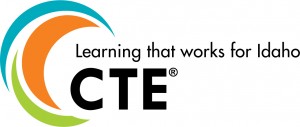Note: NASDCTEc has launched a new blog series called, “Getting to Know …†We are using this series to help our readers learn more about specific states, State CTE Directors, our partners and more. Check out our entries about Florida and Michigan!
State CTE Director: Dwight Johnson, Administrator, Professional-Technical Education
About Idaho: CTE in Idaho is known as Professional-Technical Education, or PTE. The Division of Professional-Technical Education is responsible for secondary, postsecondary and adult PTE programs. PTE is delivered at the secondary level through high schools and magnet schools. At the postsecondary level, there are three community colleges, one standalone technical college and two technical colleges that are embedded within the state’s four-year universities – all with PTE programs.
With the belief that PTE sits at the nexus of education and the workforce, Johnson has been using his years of experience at the Department of Labor to strengthen connections between secondary and postsecondary PTE programs and the workforce. This starts with an intensive realignment process of secondary and postsecondary CTE programs, which will help to provide a seamless educational experience for Idaho students and best prepare them for success in their careers. Check out just a few facts about Idaho PTE here!
Notable in Idaho: Idaho has been working to expand student access to PTE programs of study through its soon-to-launch PTE Digital, which allows students to take PTE courses in health and IT. Johnson said PTE is looking to expand these options to other pathways to create more opportunities, particularly for students located in very rural areas.
Additionally, in 2014, the Idaho legislature established the Fast Forward program, which provides junior and senior high school students with up to $200 and $400, respectively, to help cover the cost of taking dual credit courses, PTE-approved industry certification exams and college-bearing exams. The program has been so successful that costs have far exceeded original projections, as more and more students take advantage of the opportunity to earn advance credit and certifications.
Finally, the Department is developing a microcertification and badging effort called SkillStack. The initiative has two primary goals: to validate students’ technical skills and competencies against industry-defined standards and to help with the articulation of credit from secondary PTE programs to postsecondary institutions. Idaho educators can track and validate student skill attainment through the site, once the Department verifies that the curriculum taught was aligned to industry standards. Soon, employers will be able to search for candidates with the badges, and skills, that they need.
Andrea Zimmermann, State Policy Associate


